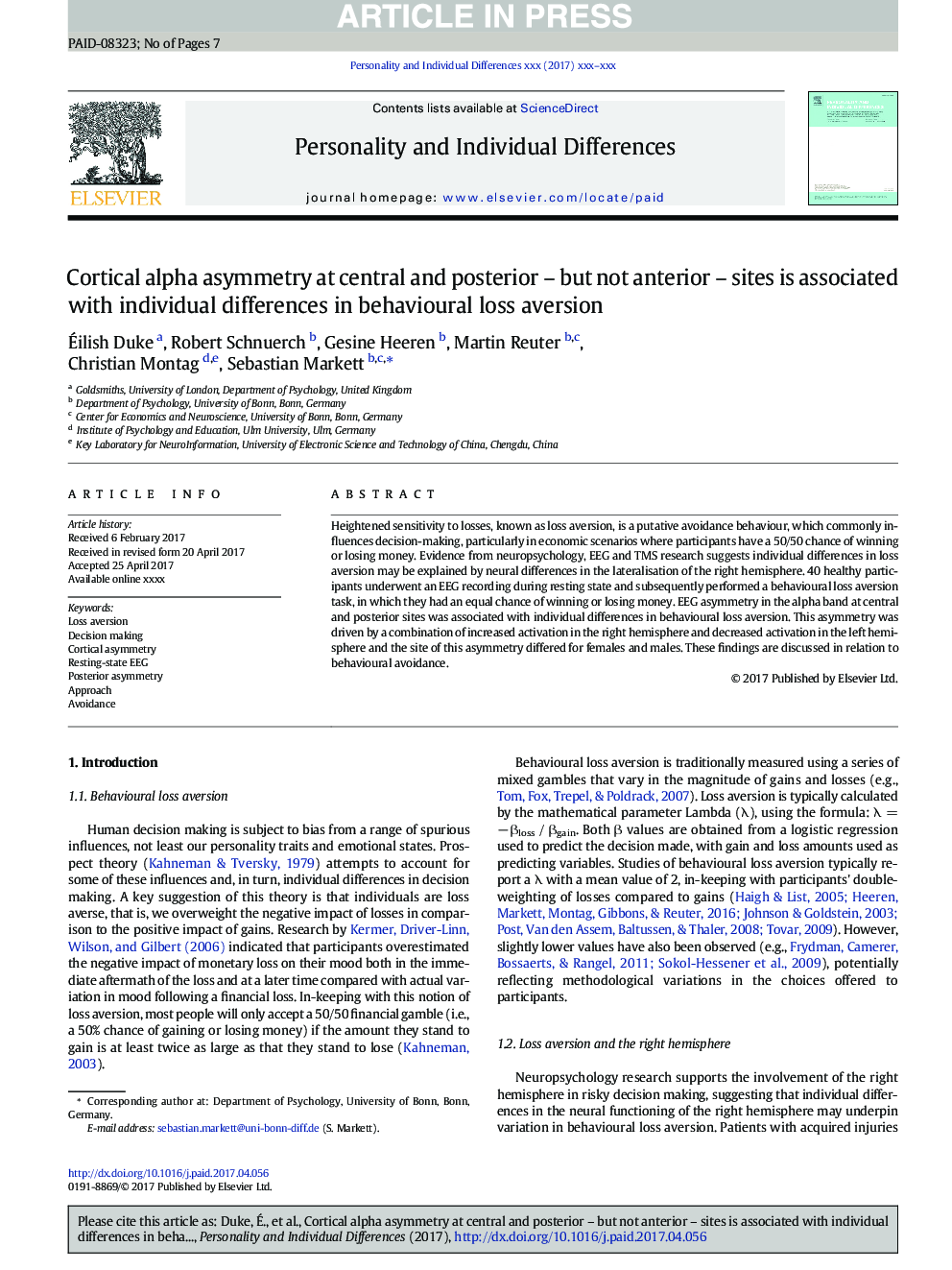| Article ID | Journal | Published Year | Pages | File Type |
|---|---|---|---|---|
| 7249375 | Personality and Individual Differences | 2018 | 7 Pages |
Abstract
Heightened sensitivity to losses, known as loss aversion, is a putative avoidance behaviour, which commonly influences decision-making, particularly in economic scenarios where participants have a 50/50 chance of winning or losing money. Evidence from neuropsychology, EEG and TMS research suggests individual differences in loss aversion may be explained by neural differences in the lateralisation of the right hemisphere. 40 healthy participants underwent an EEG recording during resting state and subsequently performed a behavioural loss aversion task, in which they had an equal chance of winning or losing money. EEG asymmetry in the alpha band at central and posterior sites was associated with individual differences in behavioural loss aversion. This asymmetry was driven by a combination of increased activation in the right hemisphere and decreased activation in the left hemisphere and the site of this asymmetry differed for females and males. These findings are discussed in relation to behavioural avoidance.
Related Topics
Life Sciences
Neuroscience
Behavioral Neuroscience
Authors
Ãilish Duke, Robert Schnuerch, Gesine Heeren, Martin Reuter, Christian Montag, Sebastian Markett,
